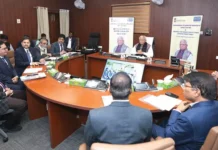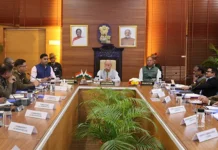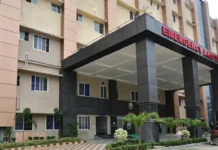[ Tongam Rina ]
It’s that time of the year when everyone will be expressing outrage on social media about the pass percentage in the central board exams; so those in responsible positions will indulge in blame games, excuse themselves from responsibilities, and set unrealistic targets.
The statistics are glaring and reflect the collective failure of all. Altogether 14,724 students appeared for the Class X examination, out of which only 5,848 students have passed, registering a pass percentage of 39.72. That’s not even 40 percent.
Lower Siang recorded the highest pass percentage (58.82) among the 26 districts, followed by Leparada (56.62), and Lower Subansiri (53.07). Shi-Yomi recorded the lowest pass percentage (25.60).
Like in other years, the statistics were slightly better in Class XII. Altogether 8,617 students out of the 14,085 who had appeared for the exam passed, with a pass percentage of 61.18. Tawang registered the highest pass percentage (90.46), followed by Papum Pare (82.85), and Shi-Yomi (76.47).
For decades Arunachal has been consistent with its ranking in these exams – one of the worse performing states in the Guwahati region.
Given that many students were promoted to the next class for two consecutive years during the peak Covid period, with practically no classes held, it would not be a surprise if the performance in the next few years is worse than it was in the previous years.
In 2020-2022, schools in rural areas were shut because there was no way that classes could be conducted in the absence of internet connectivity. Even in the urban areas, including Itanagar, many government school students could not access education because smartphones were out of reach.
The Covid period definitely made the already grim education situation grimmer in the state.
We all know the problem. What next?
It is wrong to blame the teachers entirely. It would be unrealistic to expect that teachers would stay in villages where there are no medical facility and school facility for their own children. The problem starts with the elected representatives, who only like to talk about the problem but won’t look for a tangible solution.
There are enough teachers and schools. However, there is no equitable distribution of teachers. There are more than 30 teachers in some higher secondary schools, while there aren’t even 10 in some. For obvious reasons, the schools in the capital region and other urban centres have more teachers than required, while the rural areas have no takers. It is true that some schools in the capital region, Ziro, Pasighat, or Tezu may require more teachers because of the number of students; however, it’s also true that teachers prefer urban schools to rural ones.
After rationalisation of teachers and making sure that it has actually been done, the department should stop its practice of taking recommendations from elected representatives, as is the current practice for posting and transfer.
So many teachers are holding administrative positions instead of teaching. The department should do a realistic count to figure out how many are actually needed in administration. The rest should be sent back to the classrooms to teach.
Teachers’ recruitment should be merit-based only. There must be loopholes; otherwise the recent illegal appointment in West Siang, East Siang and Longding districts would not have happened. Recruit only those who qualify the Arunachal Pradesh Teacher Eligibility Test and are already trained even for primary schools.
In 2022, only 860 candidates out of the 6,394 who had appeared for the teachers’ eligibility examination passed. Some of them were in-service teachers on contract. The results say a lot about the quality of education in general in the state.
Also, the state government must strengthen the kindergarten-anganwadi centres in all the villages. These anganwadis should teach the children basic reading and writing, so that there is gradual transition instead of starting everything in Class 1, intimidating the students who are barely six years old.
Given that govt isn’t able to handle school education, it is also time to look for alternatives. It should consider public-private partnership in education sector with no economic burden on students.
The rich and poor divide in the state is starkly visible in the education sector. As competition gets more intense, students from poor economic backgrounds have no chance to cross the invisible barrier that’s been put up by the state and the department. How will a child from a government school which has no mathematics teacher compete with a student who has access to a teacher as well as private tuition and parental guidance?
There will be very limited or no chance for children going to government schools to compete with students from economically affluent families, who go to private schools with the best of teachers, and extra tuitions available. For these poor students, the tragedy is that exception to excel will be rare.





